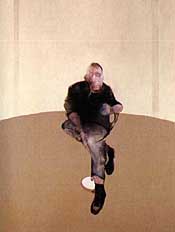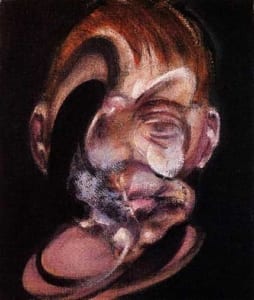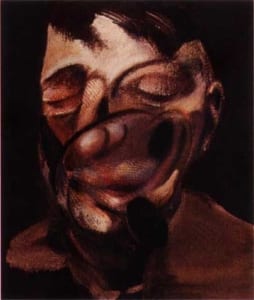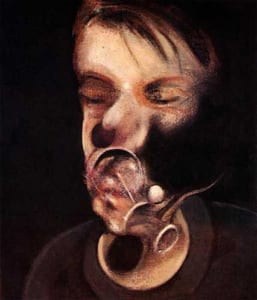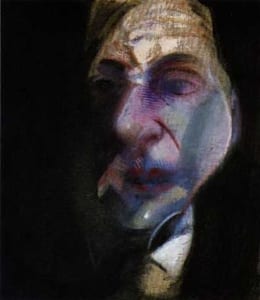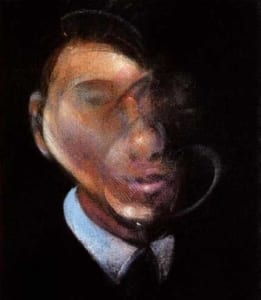Francis Bacon
Francis Bacon (1909-1992) is widely recognized as one of the most important figures in European art of the second half of the 20th century. In June 1999, The Legion of Honor (The Fine Arts Museum of San Francisco) hosted a Retrospective Exhibition of his paintings. As a part of Qcc’s continuing effort to document the work of important queer artists, we have provided a link to this exhibition as well as links to other online exhibitions and image resources for those interested in the work of Francis Bacon.
From various sources on the web, we have also curated a small exhibition of self-portraits that profoundly displays the signature of Francis Bacon.
Francis Bacon
A Retrospective Exhibition
June 12, 1999 – August 2, 1999
The following text is from the Legion of Honor’s on-line introduction to the exhibition.
The 60 works in this exhibition, the first major showing of Francis Bacon’s work in the U.S. in many years, will trace several of Bacon’s main themes: crucifixion, works inspired by Van Gogh and by Velázquez’s Portrait of Pope Innocent X; self-portraits; and paintings of lovers, friends and art-world denizens, exotic landscapes, and animals. Several large-scale diptychs and triptychs will illustrate his exploration of episodic, multipanel formats. Francis Bacon (1909-1992) is widely recognized as one of the most important figures in European art of the second half of the 20th century. His intense expressionistic style builds on the tradition of Picasso and the German Expressionists in a personal and distinct manner. After beginning his career as an avant-garde interior designer, Bacon turned to oil painting in 1929, adopting a style influenced by Picasso and the surrealists. He destroyed most of his early work, however, and only in 1944 did he produce a painting, Three Studies for Figures at the Base of a Crucifixion, that established him as a new force in British art. By the mid-1950s, his somber and torturous but beautifully painted figure studies brought him international acclaim and, at a time when abstraction was ascendant, revitalized the tradition of figurative art.


